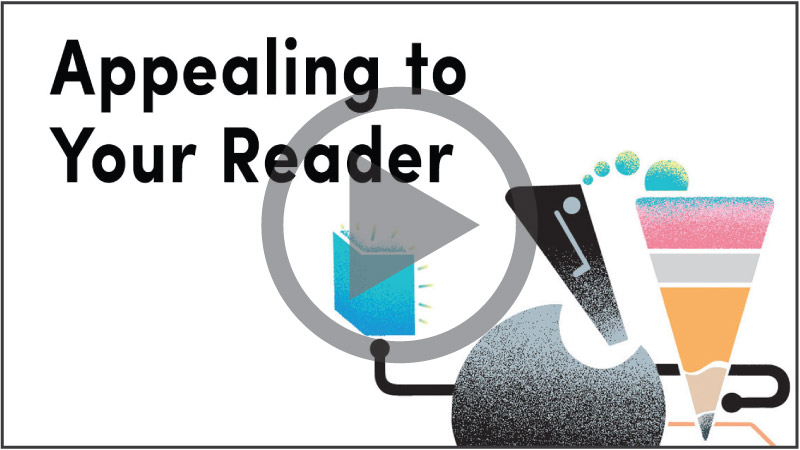Successful business writing comes down to a simple equation: clear writing + reader buy-in = results. No buy-in. No results.
As a writer, you cannot literally make your readers sign a contract, perform a task, or understand a new policy. You can, however, imagine yourself in your readers' shoes, putting yourself in their world.
From this perspective, you can evaluate your writing with an all-important question in mind: Would you do business with you? If not, you'll need to make some revisions.
How can I understand my reader’s world?
To read from a client perspective, consider the reader’s knowledge, needs, and authority. Answer these questions to get inside your reader's world.
- What is my relationship with my reader? Think of the strength of the relationship and position of the reader.
- How much authority or responsibility does my reader have? Consider how this authority might influence how the reader reacts to the writing.
- What does my reader know and need to know? Match details to a specific reader or to a broad audience.
- What are my reader’s values, needs, and priorities? Match details to your reader's needs.
- How will the person feel about the message? (Motivated? Discouraged? Helped? Threatened? Informed?) Write with the receiver’s feelings in mind.
Having contemplated your reader’s world, now imagine that your writing has just popped up on your screen for the first time. Read it from the receiver's perspective.
How can I test my writing from a reader's point of view?
If you can imagine your reader speaking each bolded line below, check it off. If you can’t, try the revision suggestion that follows each test.
☑ I understand what the writing is about and why I am receiving it.
Revising Tip: If you haven’t clearly indicated what you are writing about and why, you need to work on your main point. The main point is the big idea you are trying to get across to your reader—the subject and purpose of the message expressed, ideally, in a single sentence.
Subject
|
|
Purpose
|
|
Main Point
|
|
a new alarm code and procedure
|
+
|
I want everyone to use them.
|
=
|
Starting tonight, everyone must use the new code and procedure for setting the alarm.
|
☑ The message benefits me or connects to something I need.
Revising Tip: You won't win over readers because your main point is good for you. It has to be good (or necessary) for readers as well. Make sure that your message focuses on your reader’s needs—security, acceptance, self-esteem, achievement, etc. Are the benefits to the reader clearly stated in the message?

☑ The writing acknowledges my point of view.
Revising Tip: When you expect resistance to your message, answer the main objections your reader is likely to have to the message. Recognize that any objection your audience has relates to a need—perhaps for respect, confidence, or employment. Focus on that need, and acknowledge the objection in one of the following ways:
1. Counter the objection.
Objection: We shouldn't pay marketing and sales staff to work on an untested venture.
Counter: We are paying marketing and sales anyway through the winter quarter, so why not pay them to find new accounts?
2. Show how the benefits outweigh the objection.
Objection: It's probable that we'll go to all this trouble and still see no increase in sales.
Overruled: Though we may not see initial results, we can learn a lot that will lead to more sales later.
3. Concede the objection and move on.
Objection: This is a really radical realignment of marketing priorities.
Conceded: Yes, this idea is radical, but we need something radical to change our winter sales slump.
☑ The writing addresses me respectfully.
Revising Tip: If you are writing correspondence (email or letter), make sure your message does the following:
- Starts and ends politely. (Include a respectful salutation and closing.)
- Uses please and thank you.
- Uses we, us, and ours to include (not exclude) the audience. (In negative situations, avoid you, which can sound accusatory.)
- Uses appropriate courtesy titles (Mr., Ms., Dr.).
- Treats names with respect and spells them correctly.
|